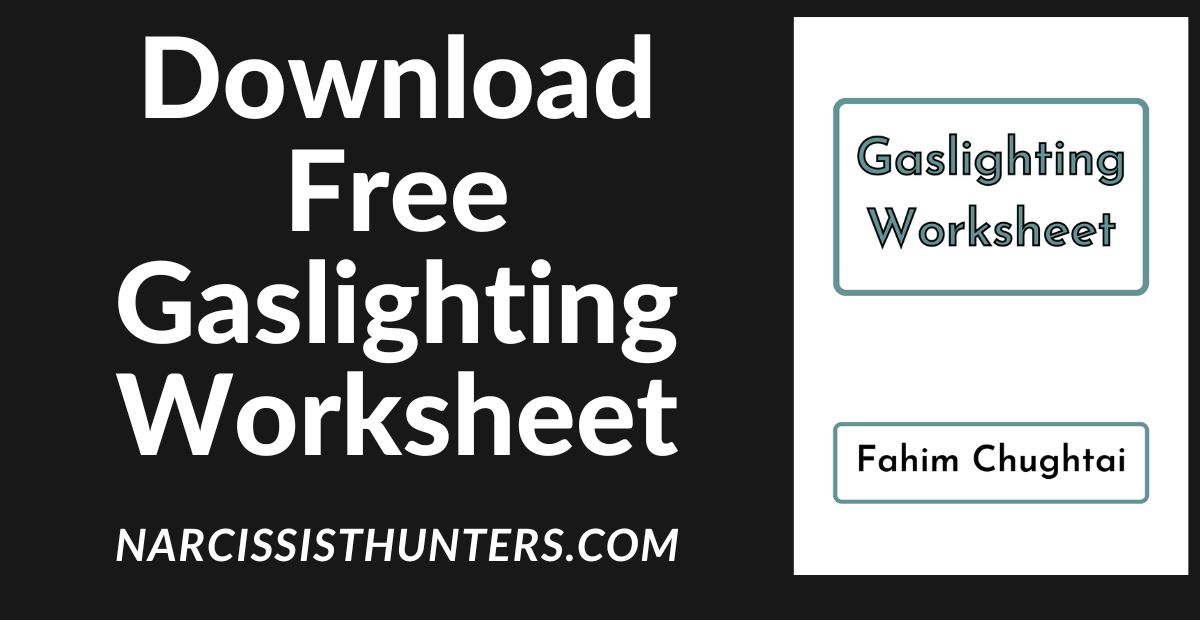Gaslighting is a destructive manipulation tactic commonly used in narcissistic relationships, leaving victims feeling confused, invalidated, and doubting their own perceptions of reality.
Recognizing the signs of gaslighting and taking steps to heal is crucial for reclaiming your sense of self and regaining control over your life. In this blog post, we will explore a gaslighting worksheet designed to help individuals identify gaslighting behaviors, regain their reality, and develop strategies for self-care and healing.
Who is this Gaslighting worksheet for?
This Gaslighting worksheet is designed for individuals who have experienced gaslighting within a narcissistic relationship. It can be beneficial for anyone who has been manipulated and made to question their own reality, regardless of gender, age, or background.
Gaslighting can occur in various types of relationships, such as romantic partnerships, family dynamics, friendships, or workplace environments. The worksheet aims to provide support and guidance to individuals who are ready to recognize, heal from, and overcome the effects of gaslighting.
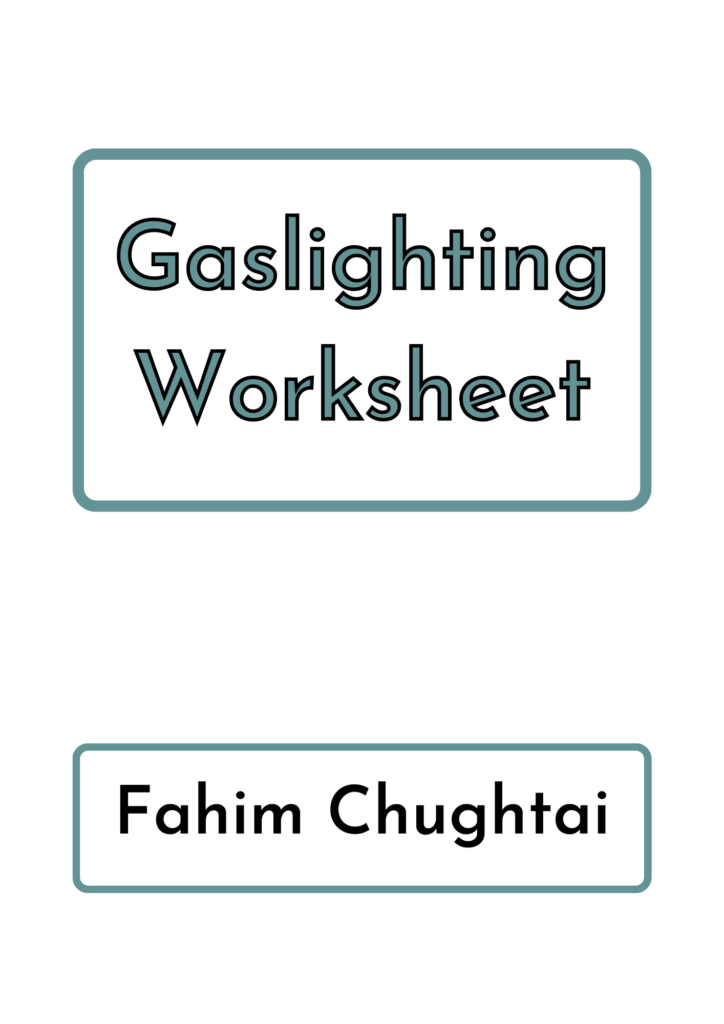
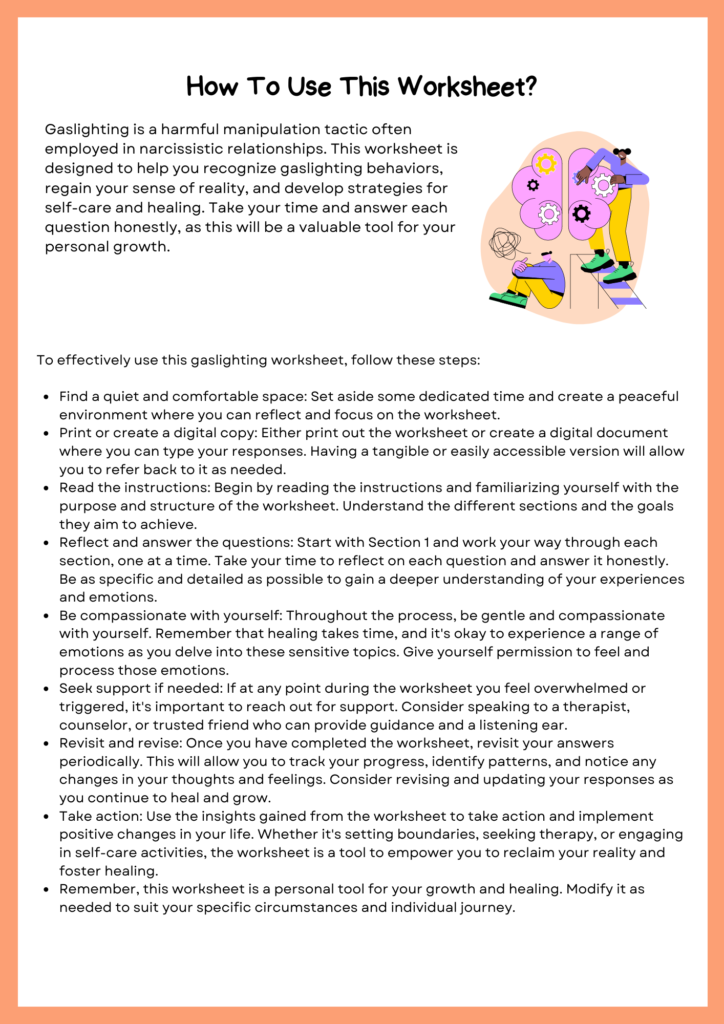

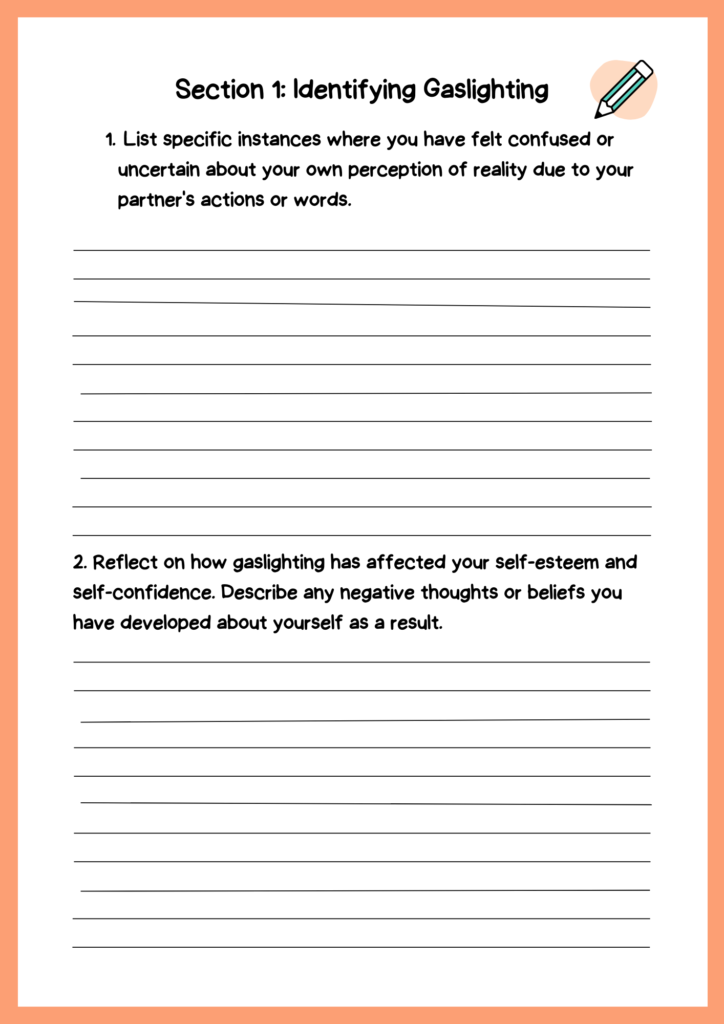
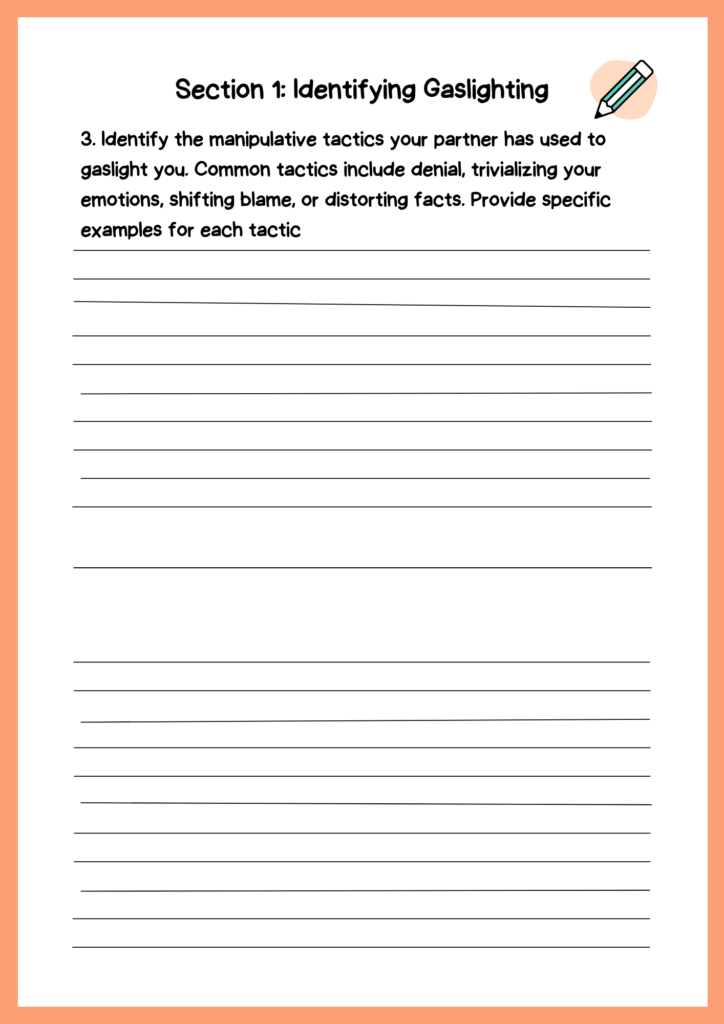

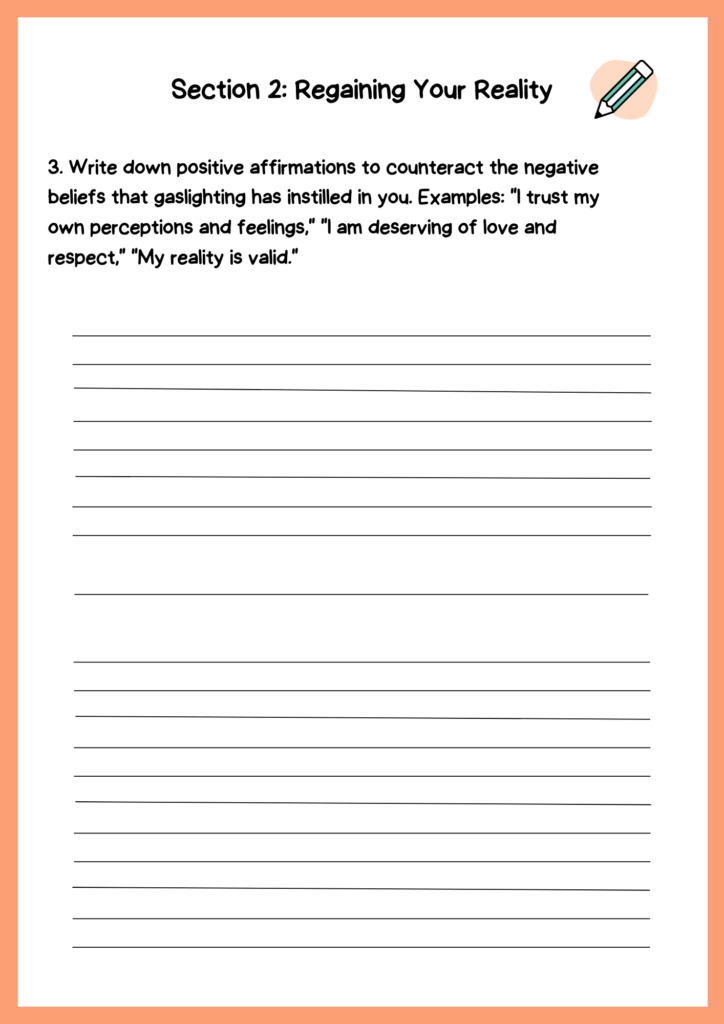
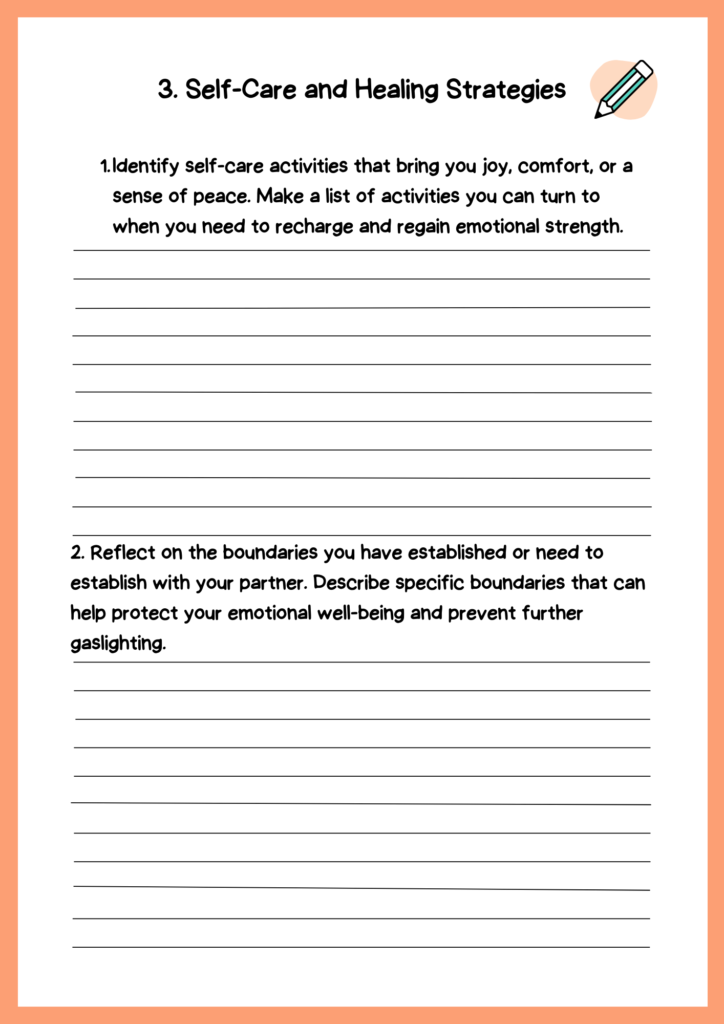

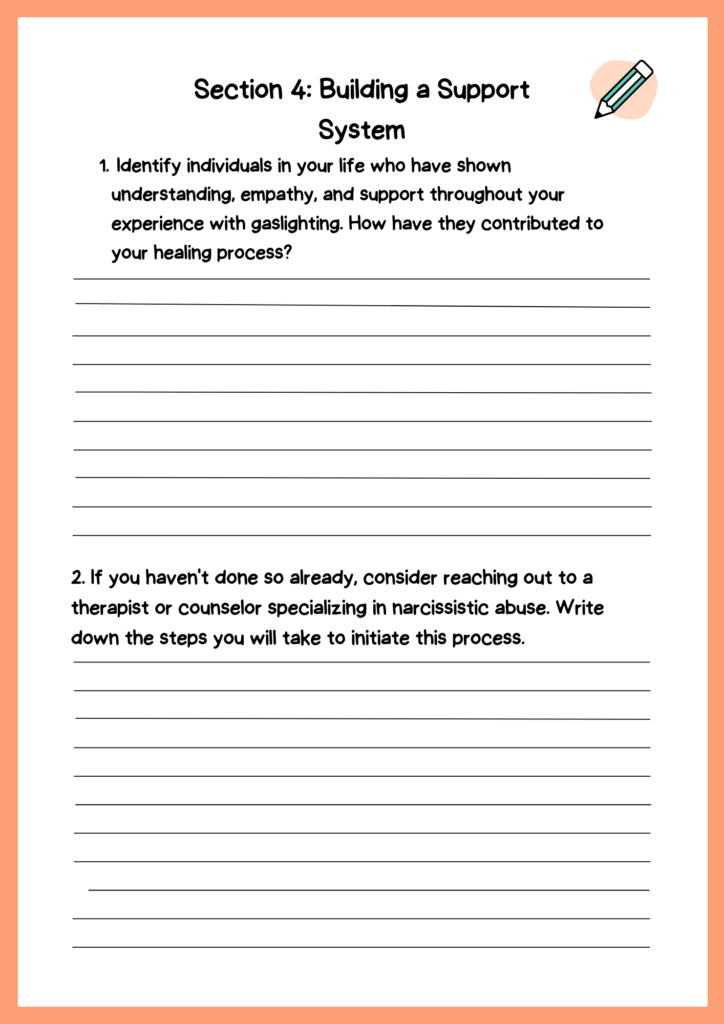
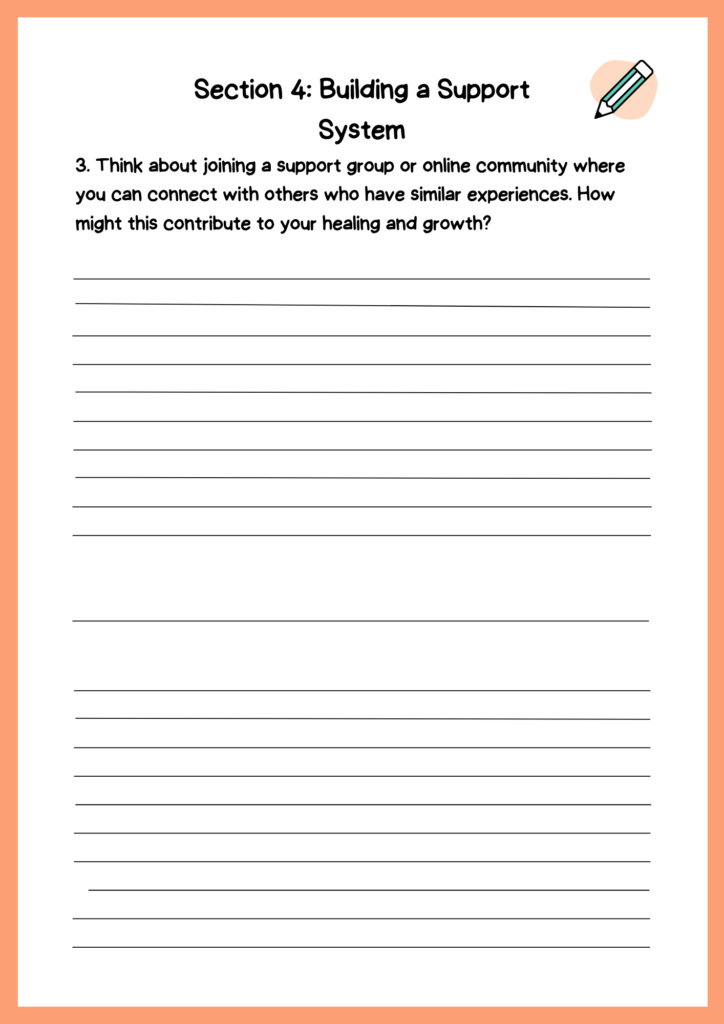
Section 1: Identifying Gaslighting
Gaslighting is a psychological tactic that seeks to make the victim question their own sanity and perception of reality. The first section of the worksheet prompts individuals to list specific instances where they have felt confused or uncertain about their own reality due to their partner’s actions or words. By documenting these experiences, individuals can gain clarity and recognize the impact gaslighting has had on their lives.
The worksheet also encourages individuals to reflect on how gaslighting has affected their self-esteem and self-confidence. Gaslighting often leads to negative thoughts and beliefs about oneself. By acknowledging these beliefs, individuals can begin to challenge them and cultivate self-compassion.
Section 2: Regaining Your Reality
Gaslighting undermines an individual’s trust in their own perceptions and intuition. In this section, the worksheet prompts individuals to describe moments when they have questioned their sanity or intuition due to gaslighting. By acknowledging these doubts, individuals can start to rebuild trust in themselves.
Seeking validation from others can be a powerful tool in reclaiming reality. The worksheet encourages individuals to recall instances when they sought support from trusted friends, family, or professionals. This validation helps individuals regain their confidence and trust in their own experiences.
Positive affirmations play a crucial role in counteracting the negative beliefs instilled by gaslighting. The worksheet prompts individuals to create affirmations that reinforce their self-worth, intuition, and ability to trust their own perceptions.
Section 3: Self-Care and Healing Strategies
Gaslighting takes a toll on emotional well-being, and self-care becomes essential for healing. The worksheet encourages individuals to identify self-care activities that bring them joy, comfort, and a sense of peace. Engaging in these activities helps individuals recharge and build emotional resilience.
Establishing and maintaining boundaries is crucial in protecting oneself from further gaslighting. The worksheet prompts individuals to reflect on their boundaries and encourages the creation of clear, healthy boundaries that prioritize emotional well-being.
Seeking professional support is often vital for healing from gaslighting. The worksheet prompts individuals to research and explore therapy, support groups, and relevant literature on gaslighting and narcissistic abuse. This step empowers individuals to reach out for assistance and gain insights from experts in the field.
Section 4: Building a Support System
No one should have to go through the healing process alone. In this section, the worksheet encourages individuals to identify supportive individuals in their lives who have shown understanding, empathy, and support. These individuals play a crucial role in the healing process, providing validation and a safe space to share experiences.
The worksheet also emphasizes the importance of seeking professional help through therapy or counseling. It guides individuals in taking the necessary steps to connect with a therapist specializing in narcissistic abuse, ensuring they receive the guidance and support they need.
Lastly, joining a support group or online community can provide a powerful sense of validation and belonging. By connecting with others who have similar experiences, individuals can share insights, gain support, and accelerate their healing and growth journey.
How to use this Gaslighting worksheet?
To effectively use this gaslighting worksheet, follow these steps:
- Find a quiet and comfortable space: Set aside some dedicated time and create a peaceful environment where you can reflect and focus on the worksheet.
- Print or create a digital copy: Either print out the worksheet or create a digital document where you can type your responses. Having a tangible or easily accessible version will allow you to refer back to it as needed.
- Read the instructions: Begin by reading the instructions and familiarizing yourself with the purpose and structure of the worksheet. Understand the different sections and the goals they aim to achieve.
- Reflect and answer the questions: Start with Section 1 and work your way through each section, one at a time. Take your time to reflect on each question and answer it honestly. Be as specific and detailed as possible to gain a deeper understanding of your experiences and emotions.
- Be compassionate with yourself: Throughout the process, be gentle and compassionate with yourself. Remember that healing takes time, and it’s okay to experience a range of emotions as you delve into these sensitive topics. Give yourself permission to feel and process those emotions.
- Seek support if needed: If at any point during the worksheet you feel overwhelmed or triggered, it’s important to reach out for support. Consider speaking to a therapist, counselor, or trusted friend who can provide guidance and a listening ear.
- Revisit and revise: Once you have completed the worksheet, revisit your answers periodically. This will allow you to track your progress, identify patterns, and notice any changes in your thoughts and feelings. Consider revising and updating your responses as you continue to heal and grow.
- Take action: Use the insights gained from the worksheet to take action and implement positive changes in your life. Whether it’s setting boundaries, seeking therapy, or engaging in self-care activities, the worksheet is a tool to empower you to reclaim your reality and foster healing.
Remember, this worksheet is a personal tool for your growth and healing. Modify it as needed to suit your specific circumstances and individual journey
Last words
Gaslighting in narcissistic relationships is a deeply harmful manipulation tactic that can leave individuals feeling disoriented and doubting their own reality. Reclaiming one’s reality and healing from gaslighting is a courageous journey that requires self-awareness, validation, self-care, and support.
By utilizing the gaslighting worksheet outlined in this blog post, individuals can gain clarity, develop strategies for healing, and embark on a path toward regaining their sense of self and building a brighter future. Remember, you are not alone, and your reality matters.
